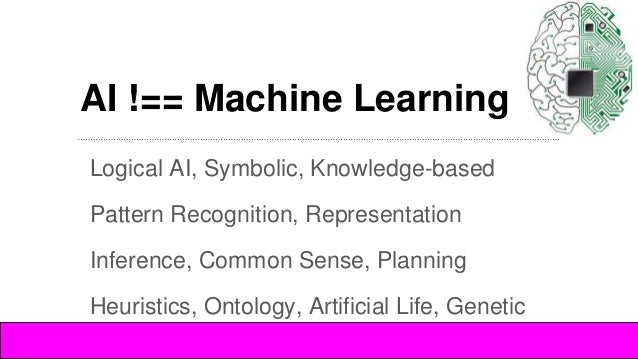Today, Artificial Intelligence (AI) has become on the hot topics and biggest research fields, every giant tech company and even startups are working on. It’s a very broad topic ranging from basic calculators and self-steering technology to self aware robots that can radically change the future.

Developing systems that equal or exceed human intelligence is the crux of AI.According to Mark Cuban (American businessman and investor), AI will make the world’s first trillionaire. ‘The first trillionaire is going to be someone who masters Artificial Intelligence and all its derivatives and implements it in ways we never thought of’, he said.If you are an AI aspirant who is confused on which coding language to select for your next big project, you are landed at the correct destination. Below we’ve shown which programming language is best for developing AI software. JuliaBenchmark times relative to C (C performance = 1.0,smaller is better)Julia is designed to deal with high performance numerical analysis and computational science without the typical requirement of separate compilation. It includes a type system with parametric polymorphism and multiple dispatch as its core programming paradigm.Julia’s deep mathematical roots and comprehensive customizability make it very friendly to work with for a data analyst. With Julia, it’s quite easy to translate algorithms from research paper into code with no loss in translation – thus decreasing model risk and improving safety.However, the most important factor is the community – It’s an open source language, licensed under the liberal MIT license.
Bayou Ai Code
Julia runs on almost all types of hardware out there, including IBM, Intel, NVIDIA and ARM.Since Julia combines the ease of use and familiar syntax of Matlab, Python and R with the speed of C, developers no longer need to estimate model in one language and reproduce them in a faster production language. This reduces error, and saves time and cost.The programming language is now. In 2016, IBM and Julia computing eye fundus images and developed a deep learning solutions that provide better eye diagnosis and care to thousands of rural Indians. HaskellHaskell in strong static typing, non-strict programming language developed in 1990. Since there are not many Haskell developers, private companies are reluctant to try Haskell.One thing that Haskell is perfect at is abstraction (abstract mathematics, not like Java OOP).

It allows expressive and efficient libraries express AI algorithms. For example, HLearn that uses well known algebraic structure (modules, monoids, etc.) to express and boost the speed of simple machine learning algorithms.Although, you can write these algorithms in any language, Haskell makes them more expressive than others, while maintaining decent performance.
For instance, written in Haskell.Haskell supports embedded domain-specific languages, which is a famous area of programming language research, applicable to a large number of domains including artificial intelligence. Specifically, it is good host for probabilistic programming and helps developers catch errors at compile time. If you are interested, you can check out, a research project creating an embedded probabilistic programming.The language has CUDA binding and is compiled to bytecode. Since it is functional and stateless, code can be easily executed on different CPUs in the cloud.
If we talk about industry adoption, Facebook uses Haskell to fight spam. JavaScriptA high-level, event-driven, interpreted programming language that is mostly used to make webpages interactive and creating online programs, including games.In JavaScript, it’s not essential to learn conversation model. Learn the data in server side and then call the learner by Ajax to predict. There are numerous libraries to develop your leaner. We are summarizing three of them –ConventJS: A library for implementing deep learning – train convolutional neural network in browser. It supports fully connected layers as well as nonlinear neural network modules, classification and regression cost functions.Synaptic: A neural network library for node.js.
Its generalized algorithm is architecture-free that lets you develop and train almost all types of first and second order neural network architectures.Mind: It uses matrix implementation to process training data. You can completely customize the network topology and upload/download minds that have already learned.In short, you don’t have to reinvent the wheel – just determine what type of ‘learning’ the AI will do. PrologProlog is a logic programming language and semantic inference engine, associated with computational linguistic and artificial intelligence. It has a flexible and powerful framework that is widely used for theorem proving, non-numerical programming, natural language processing and AI in general.It’s a declarative language with formal logic. AI developers value it for its pre-designed search mechanism, nondeterminism, backtracking mechanism, recursive nature, high level abstraction and pattern matching.Prolog is well suited for problems involving structured objects and relations between them. For instance, in Prolog, it is easier to express spatial relationships between object, like green triangle is behind the blue one. It is also simple to state a general rule – if object A is closer to the person than object B, and B is closer than C, then A should be closer than C.Prolog’s nature makes it simple and straightforward to implement facts and rules. If fact, everything in Prolog is fact or a rule.
It allows you to query the database even when you have thousand of these facts and rules.Prolog supports development of graphical user interface, administrative and network applications. It is well suited for projects like voice control systems and filling templates. JavaRobotcodeThe best thing about Java language is its Java Virtual Machine technology that enables you to create a single app version, which will run on all Java-supported platforms. I respect no list of programming languages that doesn’t include F#. With the exception of C (speed), F# blows away all of these languages, for AI and pretty much anything else.Pick any language on this list that you like — I don’t care which — and I guarantee you I can write code that is cleaner, has a higher signal-to-noise ratio (i.e.
Fewer brackets, fewer parentheses, less punctuation, etc.), is more mathematically fluid, has fewer side effects, and is less bug prone, using F#. 100% guaranteed.I’ve been using it religiously for over five years, and I’ve never known a better language.
Again, the only language that has anything on it is C, for sheer speed. F# has been described as the greatest programming language since C, and I would agree with that assessment.

(Submitted on 10 Apr 2018) Abstract: The AGINAO is a project to create a human-level artificial generalintelligence system (HL AGI) embodied in the Aldebaran Robotics' NAO humanoidrobot. The dynamical and open-ended cognitive engine of the robot isrepresented by an embedded and multi-threaded control program, that isself-crafted rather than hand-crafted, and is executed on a simulated UniversalTuring Machine (UTM). The actual structure of the cognitive engine emerges as aresult of placing the robot in a natural preschool-like environment and runninga core start-up system that executes self-programming of the cognitive layer ontop of the core layer.
The data from the robot's sensory devices supplies thetraining samples for the machine learning methods, while the commands sent toactuators enable testing hypotheses and getting a feedback. The individualself-created subroutines are supposed to reflect the patterns and concepts ofthe real world, while the overall program structure reflects the spatial andtemporal hierarchy of the world dependencies. This paper focuses on the detailsof the self-programming approach, limiting the discussion of the appliedcognitive architecture to a necessary minimum.